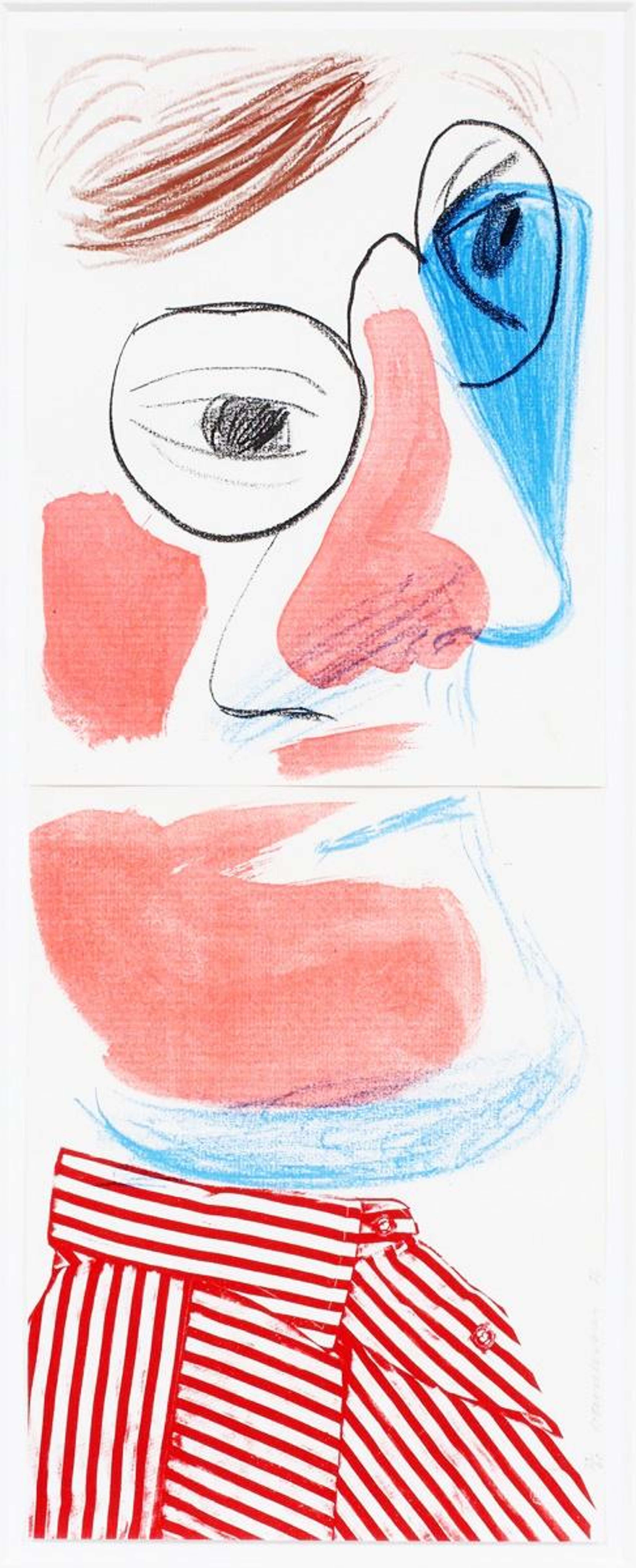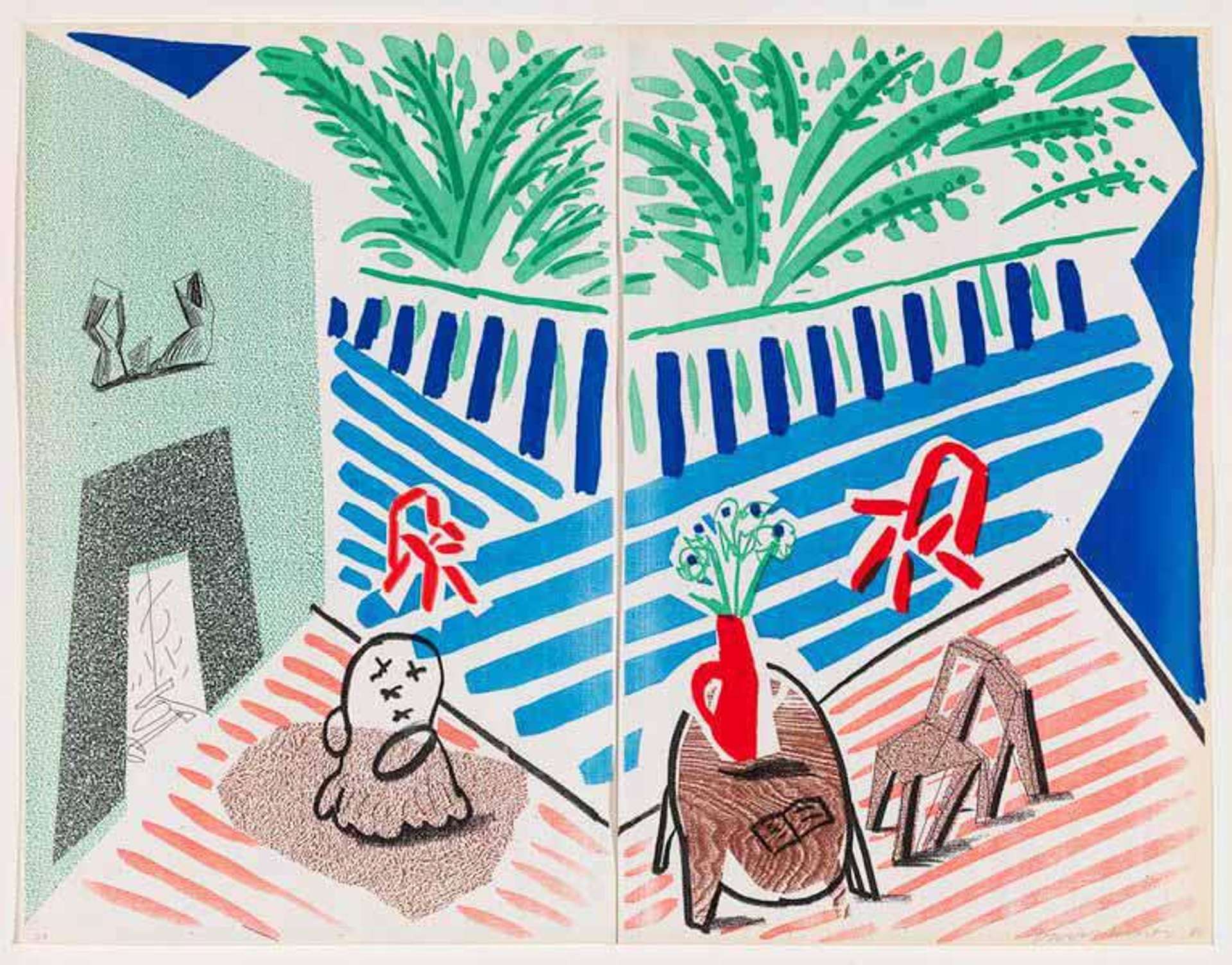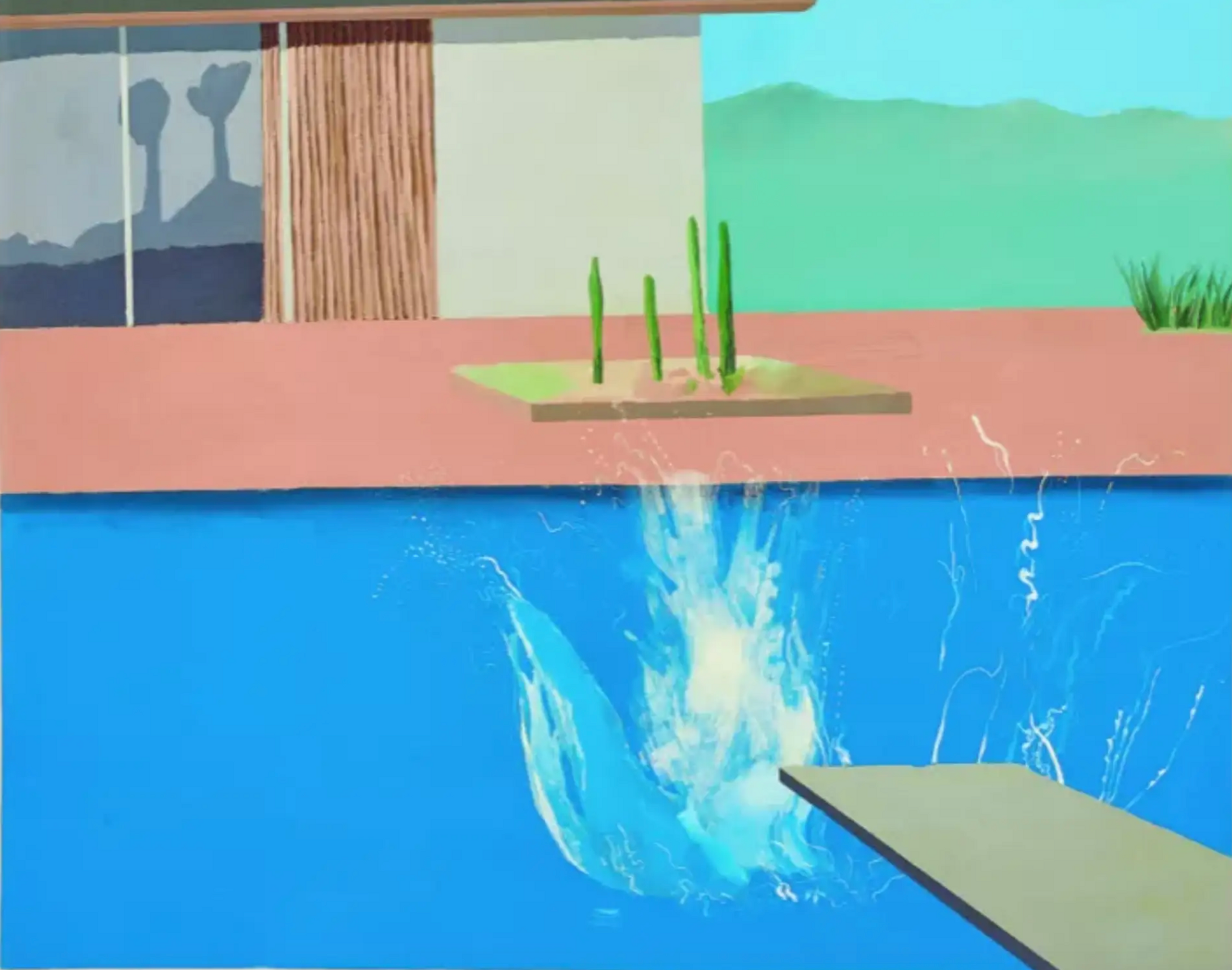 Red Flowers And Green Leaves, Separate, May 1988 © David Hockney 1988
Red Flowers And Green Leaves, Separate, May 1988 © David Hockney 1988
David Hockney
651 works
Always an artist to embrace new technologies, David Hockney’s Xerox prints showcase his commitment to reflecting technological progress in his artwork. Innovative, versatile and curious, acclaimed British artist Hockney has never been one to shy away from the challenge of a new medium.
While Hockney is perhaps best known for his larger-than-life swimming pool paintings, bold coloured acrylics are certainly not his only forte. Contrary to the old saying, Hockney is a jack of all trades and a master of all he has worked with: from paint to iPads. In the late 1980s, his fascination with technology and new ways of creating art led him to the Xerox photocopying machine. The copy machine offered Hockney his speediest technique of printing yet, allowing the artist to build layers, textures and colours like never before. However, it was not only a swift and spontaneous way for Hockney to produce his prints. The tech-savvy artist said that he had a more “philosophical” interest in the Xerox machine as a new iteration of the camera.
What is a Xerox Print?
Made by Xerox in the late-1950s, their pioneering xeorographic machine was the first fully automotive photocopier for businesses. The machines revolutionised offices around the world and were used as an efficient and rapid way of making paper copies. Xerox copiers became the focus of artists like Keith Haring and Jean-Michel Basquiat in the late 1980s, who used the medium to cement the ties between art and commercial culture.
David Hockney exploited the technology by building his prints with a series of layering, tweaking his compositions and colour palettes with every scan on the Xerox machine to create a cohesive print. Each colour element of the print was first drawn onto a separate piece of paper, before being loaded back onto the copybed. As we see in his Mulholland Drive digital print of 1986, Hockney would repeat this process of superimposing and scanning different visual elements to create prints using his own drawings and borrowed material. Here, two large green mounds with Hockney’s signature mark-making are layered on top of a map of the Californian road it is named after. Between the two hills and the pylons that connect them, the map reads ‘Hollywood’, alluding to the sites that drivers would see when cruising Mulholland Drive. Like the more traditional printing techniques of lithography and screenprinting, the Xerox collage allowed Hockney to layer these interesting motifs to create prints with a greater spatial depth and meaning.
When did Hockney start creating these and why?
In February 1986, Hockney began playing around with his friend’s Xerox copy machine, and instantly became fascinated by its ability to marry the photographic and painterly arts. As an artist who had been creating prints since his student years at Bradford Art School, Hockney had been continuously searching for a printing method that was more akin to drawing. In the Xerox copier, he found an exciting new way to overlap drawn elements with abstract shapes, assembling prints rapidly and with a noted ease.
One thing Hockney definitely enjoyed about Xerox printing was the spontaneity the technique afforded. The printing studio demanded that Hockney come prepared with his composition, and left little room for mistake and innovation while at work on the print. With the Xerox copier as his new sidekick however, Hockney was able to add unplanned elements to his prints and therefore create works which perfectly suited his eccentric style. His mixed-media Self Portrait utilised the Xerox machine to combine elements in watercolour, pencil and ink. The Xerox machine portrait is collaged together with the top half of his face on one piece of paper, and the bottom on another, pushing the printing method to extend over one plane as is usually expected of a print. Ironically, it was this digital mode of printing that brought Hockney closer to achieving a drawn image more than ever before.
 Self Portrait © David Hockney 1986
Self Portrait © David Hockney 1986Hockney and Technology
Hockney has always been an artist to embrace new developments in technology, and has never allowed himself to become entrenched in one media or style. Reflecting on the unavoidable ties between technology and art in his Retrospective, Hockney wrote that “New technologies have started revolutions that need not frighten us.” For Hockney, technology was never a threat to creativity because it could be “humanised by artists”. In fact, Hockney has continuously experimented with new kinds of everyday technologies, like the iPhone and iPad, and transformed them into devices of art creation for the modern age.
Hockney's fusion of technology and creativity is beautifully showcased in the exhibition David Hockney: Bigger & Closer (not smaller & further away). Initially held at Lightroom, King's Cross, London, the exhibition is now on display at Aviva Studios, Manchester, from 10 December 2024 to 25 January 2025. These immersive shows celebrate Hockney's innovative use of digital tools, taking viewers on a journey through his artistic process - from his pioneering Xerox experiments to his modern iPad creations.
Which print series did Hockney produce with the Xerox copier?
In 1986 Hockney produced Home Made Prints, a series created entirely with the Xerox copier. As the title of the series would suggest, the Xerox machine allowed Hockney to create his prints in the comfort of his own home, rather than the often constrictive environment of the professional printing studio. Many of the prints in this series, like Living Room and Terrace, capture the interiors of Hockney’s house on the outskirts of LA. This invigorated focus on his own home in Home Made Prints reveals the more relaxed approach to printmaking that the Xerox copier afforded Hockney.
In this particular print from the series, Hockney envisions the view out to his terrace across two pieces of printed paper. The diagonal lines that delineate the flooring of both living room and terrace converge at the meeting point of the two paper sheets, and create an abstract and dizzying play with perspective. These wide painterly strokes are contrasted with the more intricate scanned elements, like the sculptural motif that appears on the far-left wall of the print, which Hockney scaled down to appear like a drawing above the abstracted fireplace. Home Made Prints is testament not only to Hockney’s fascination with new technologies, but also his ability to manipulate these technologies and transform them into mediums of art that best speak to the viewers of their age.
Are Hockney's Xerox prints popular?
Hockney’s xerox and other print works have garnered continued demand due to both his artistic innovation and the accessible nature of printmaking. For example, his Flowers Apple and Pear on Table (1986), a signed digital print, has seen strong and steady growth in its valuation. Since its auction debut in April 2012, this print has been sold six times, notably for £22,516 in April, 2023. Limited to an edition of 59, this piece exemplifies Hockney’s enduring appeal in the print market, consistently drawing collector interest.
You can read more about David Hockney’s fascination with technology here.
Want to learn more about David Hockney's most iconic and investable prints? Read our latest David Hockney Market Watch here.










